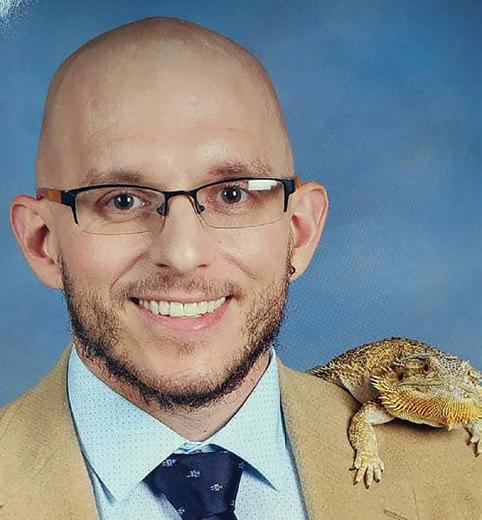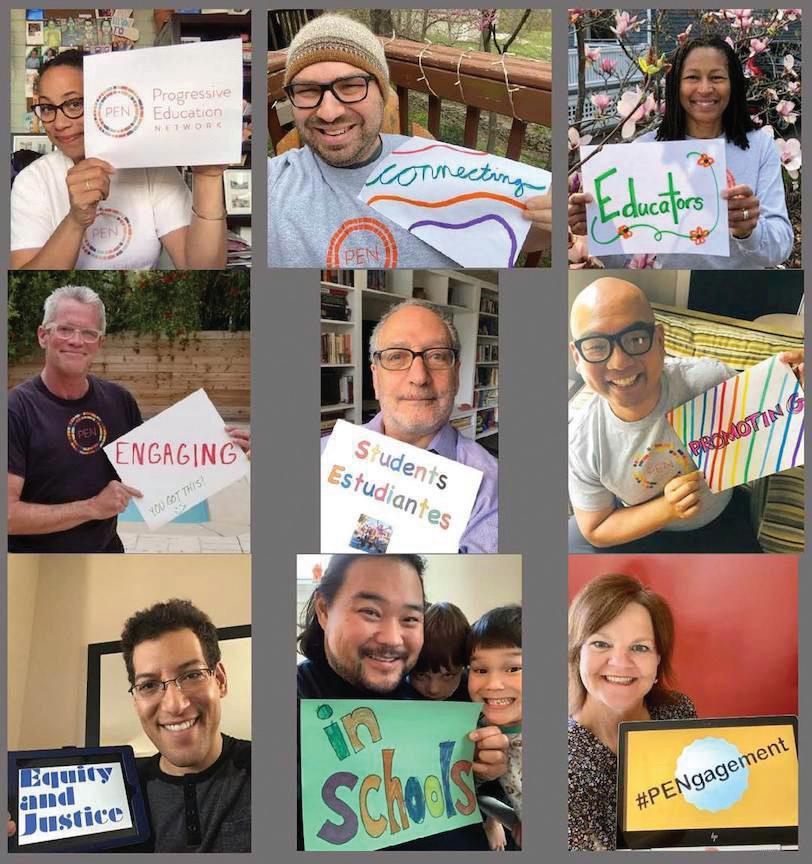
5 minute read
Tools Humans Wield
— by Becky Bob-Waksberg
Five years ago, the students in my sixth grade math class were placed with me because they struggled. I described my students as ‘reluctant mathematicians’ because I knew they were capable of thinking mathematically, but when they saw a new challenging problem many of them reacted by staring blankly, putting their heads down, or even saying, “nope.”
During a unit on rates and percents, I saw them work hard and build up their fluency with processes, but as usual when it came time to correct their tests, I was disappointed. They had some skills for how to find percents, but when asked to apply it to a fake ‘real-life’ situation about basketball players, they froze up. Over and over throughout the year, they told me they could not figure out how to apply their skills in word problems or situations.
In the meantime, Darren Wilson wasn’t indicted, and I cried. I thought about one of my students, Brandon, who had written a poem identifying with Mike Brown. My social studies teacher friends were posting on Facebook about the ways they planned to talk about it with their students the next day, and in that moment I couldn’t remember why I had decided to teach math. How could I just close my classroom door and talk about fractions?
The next morning, I put some fractions up on the board for students to write about for their warm-up: After giving them a few minutes to compare the fractions as ‘naked numbers,’ I added in the context of what the fractions represented out of their total groups in Ferguson: black people living there, arrests of black people, and the number of black cops. The students talked about what they noticed and I gave them the term ‘disproportionate,’ then we moved on to the more official plan of the day. As she was packing up for her next class Aisha asked me, “Why aren’t we talking about this more in social studies?” 483 519 67 100 3 53 , ,
I asked myself, why aren’t we talking about this more in mathematics?
A few years later, I went to a math conference session I expected to love. The presenter shared that math is a great tool for understanding the world (at this point, I was listening excitedly) because, unlike the social sciences, it is completely unbiased and objective.
This was when I started questioning my decision to be in the room.
He then shared an example for us to analyze, the issue of excessive force by police. “Is this really a widespread problem?” he asked us. “Before we look at the numbers, what is your instinct?”
An older white man in the front row said, “Well, I’ve never been mistreated by the police so I’d say, probably not.”
For the entire rest of the session, race was not named once. Not once! In a session on police violence!
With Brandon and Aisha’s class, we focused in on Oakland, where we live. I gave them the latest Census numbers of who lives in Oakland broken down by race, and the police department’s report of how many people of each race they stopped in the past year. We talked about some of the limits and fuzziness that come with categorizing people with social constructs.
As soon as I passed out the tables of numbers we would be working with, Brandon said “Whoa.” Brandon knew how to complete calculations, but he often struggled with noticing or understanding what numbers meant in context. He didn’t usually volunteer to share his thinking, and had reacted out loud without meaning to. With encouragement, he explained the number he had noticed right away. “The number of African Americans that got stopped by police,” he said. “It’s just so much higher than all the others.”
The kids went to work on connecting the numbers to find and compare rates and percents. They found that Black people were about four times more likely than White people to be stopped by police in Oakland. The word “disproportionate” came back into the conversation. When they looked at the reasons for the stops, they also found that Black people were more likely than people of other races to be stopped for probable cause or reasonable suspicion rather than a concrete traffic violation.
We talked about the difference between what we knew from the data and what we each might infer from the data, and what we could imagine other people might infer. Students wrote down new questions all of this mathematical analysis made them wonder about.
All of them worked out rates and percents to think about a situation. Some of them used those rates and percents to create protest signs.
In the conference session we used math to examine the question, “Is excessive force by police really a problem?” Here were some questions we did not examine: Do these numbers change if we disaggregate by race? Do we agree with how police departments define what is excessive? What are the explicit and implicit goals of police chiefs? Do we agree that those goals are legitimate? How might studying this topic land differently for students whose families or friends or selves have been victims of police violence? How do we define what counts as a problem? Each of these questions might have changed how we wielded the mathematics and the conclusions we drew.
Math is an incredible tool for understanding and analyzing the world. It is of course completely subjective and biased by how humans choose to use it, just like every other tool humans create and apply. If we want to attend to precision, we have got to acknowledge the lenses and assumptions that guide the questions we ask and the answers we find.
ABOUT THE AUTHOR Becky Bob-Waksberg teaches 6th grade math and science at Park Day School in Oakland, CA. She facilitates professional development for math teachers through Park City Math Institute and presents at educator conferences on topics such as mathematical freedom and teachers reckoning with harms we’ve caused in the classroom. Becky is on the board of the Ella Baker Center for Human Rights and supports the vision of justice reinvestment. She enjoys singing in harmony, drawing weird monsters, getting into intense conversations, and eating bagels. Becky.Bob-Waksberg@parkdayschool.org










